Wildflowers of the Adirondacks:
Trailing Arbutus (Epigaea repens)
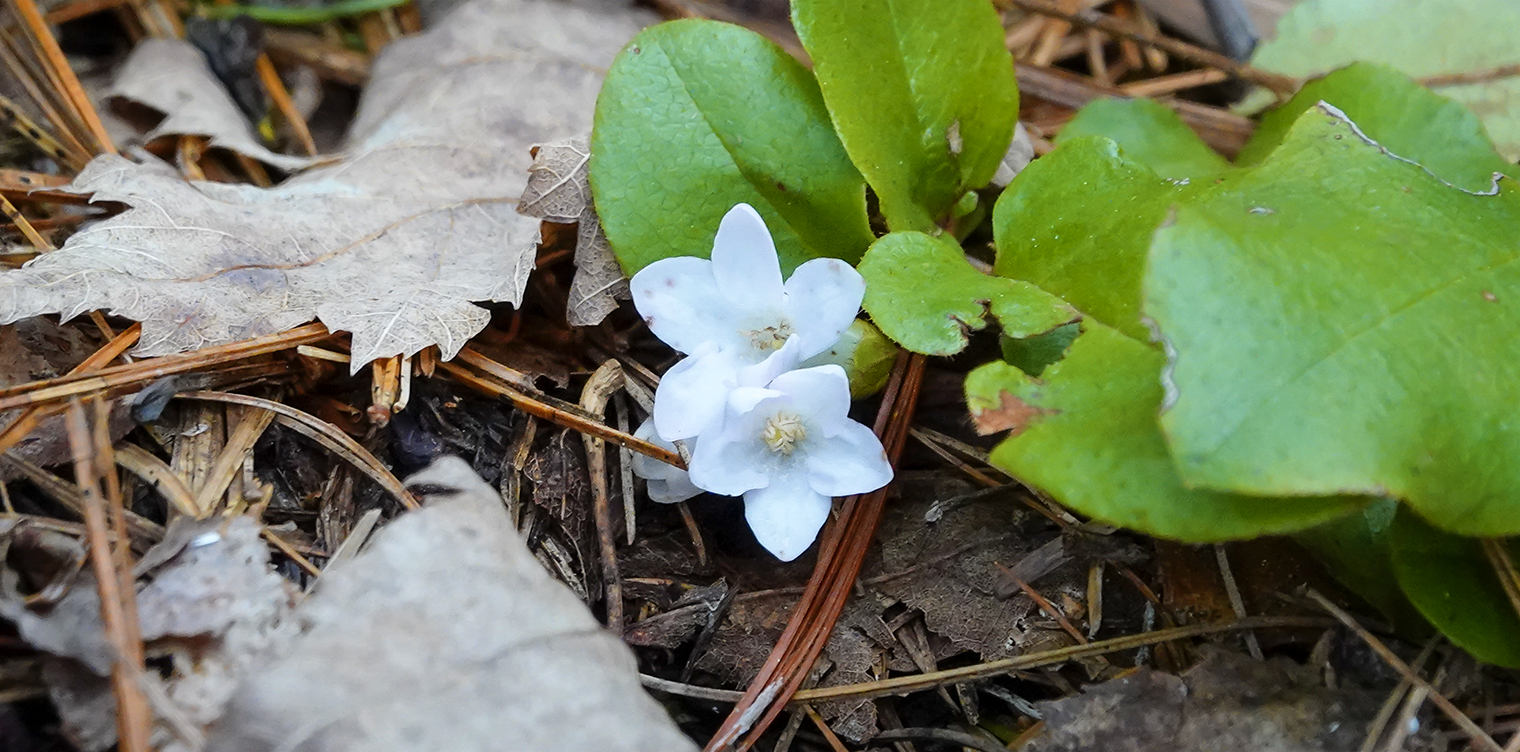
Trailing Arbutus (Epigaea repens) is a low-growing evergreen plant which bears small white or pink flowers in early spring. It grows in pine or mixed woods forests in the Adirondack Mountains of upstate New York.
Trailing Arbutus is a native perennial sub-shrub and a member of the Heath Family – a large and relatively diverse family of plants which also includes Creeping Snowberry, Bog Rosemary, Leatherleaf, Bog Laurel, Indian Pipe, and Shinleaf.
- The genus name (Epigaea) is said to come from a Greek phrase meaning "upon the earth," referring to the trailing growth of the plant.
- The species name (repens) refers to the fact that the plant has creeping and rooting stems.
Other common names for Trailing Arbutus include Mayflower, Ground Laurel, Ground-laurel, Shadflower, Winter Pink, and Plymouth Mayflower. The latter name apparently refers to the idea that the plant heralded spring for the winter-weary Pilgrims in colonial America.
Trailing Arbutus became the state flower of Massachusetts in 1918. Trailing Arbutus is also the official flower of Nova Scotia, which adopted it as its emblem in 1901.
Identification of Trailing Arbutus
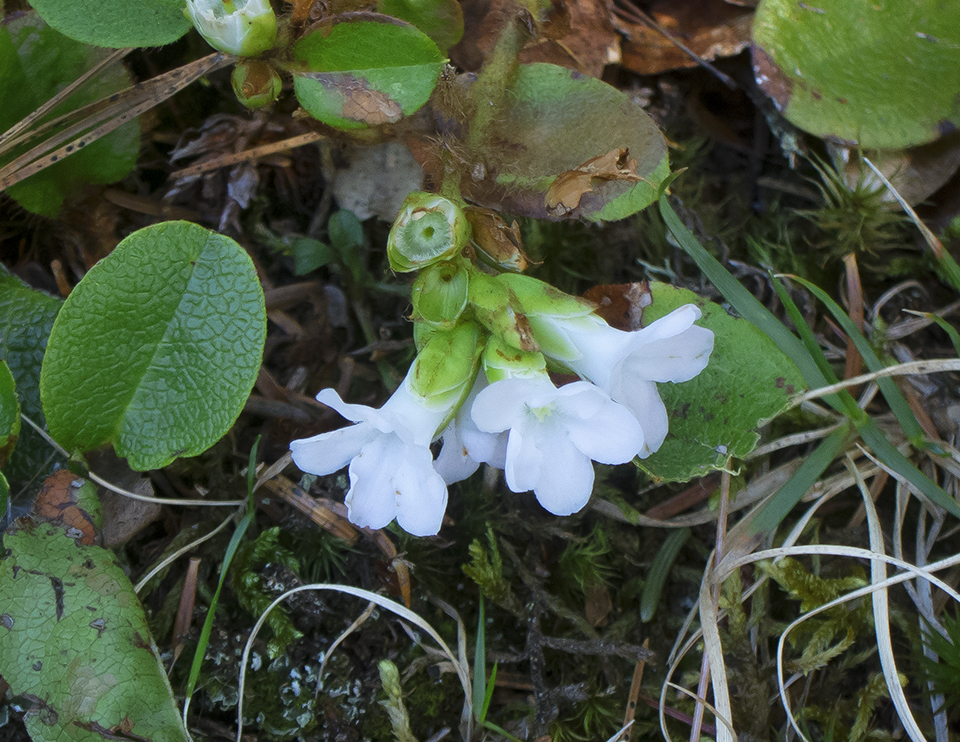
Trailing Arbutus is a low-growing shrub, usually under three inches tall. As the name implies, it forms a creeping mat, with trailing stems. The stems, which are six to 16 inches long, are covered with bristly, rusty hairs. This is one key for identifying Trailing Arbutus in the absence of flowers.
Another identification key is the evergreen leaf.
- The deep green, oval leaves are stiff and leathery.
- Leaf size varies, from ¾ to three inches long.
- The leaf margins (edges) are entire, meaning that the edges are smooth, without teeth.
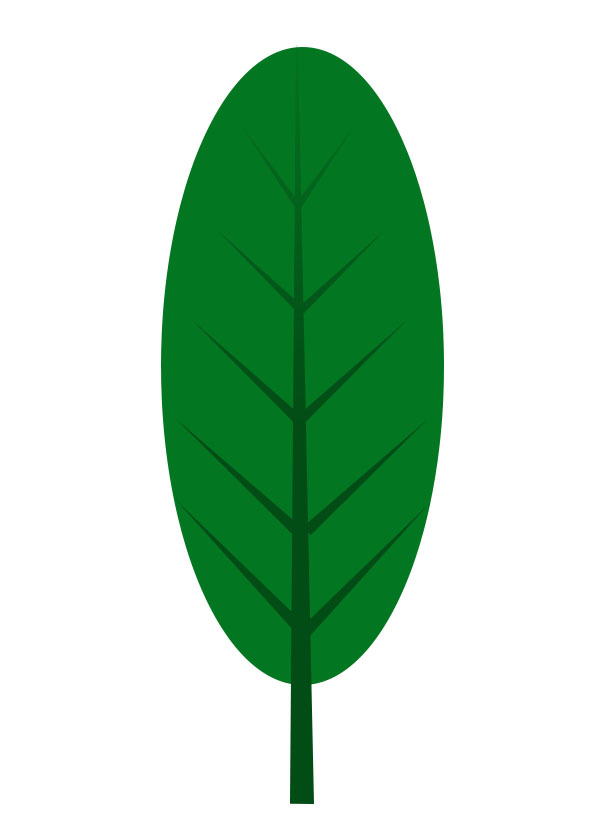 Smooth leaf edges do not have any teeth.
Smooth leaf edges do not have any teeth. - The base of the leaf may be rounded or heart-shaped.
- The leaf edges have stiff, rusty-colored hairs.
- The leaves are alternate, which means they emerge from the stem singly, one leaf per node.
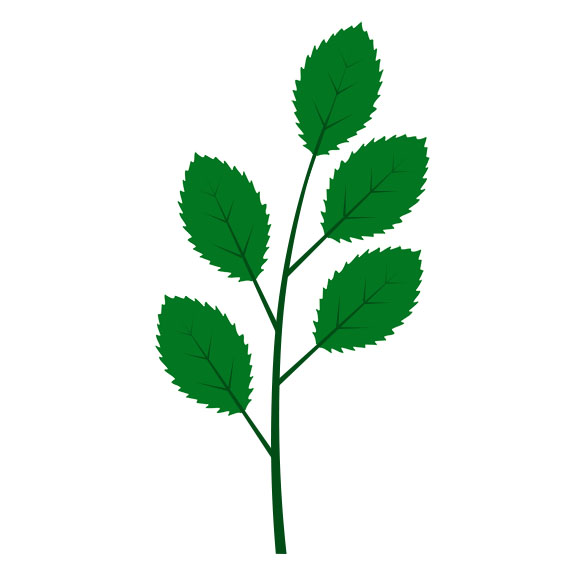 Alternate: An arrangement of leaves (or buds) on a stem (or twig) in which the leaves emerge from the stem one at a time. This often makes the leaves appear to alternate on the stem.
Alternate: An arrangement of leaves (or buds) on a stem (or twig) in which the leaves emerge from the stem one at a time. This often makes the leaves appear to alternate on the stem.
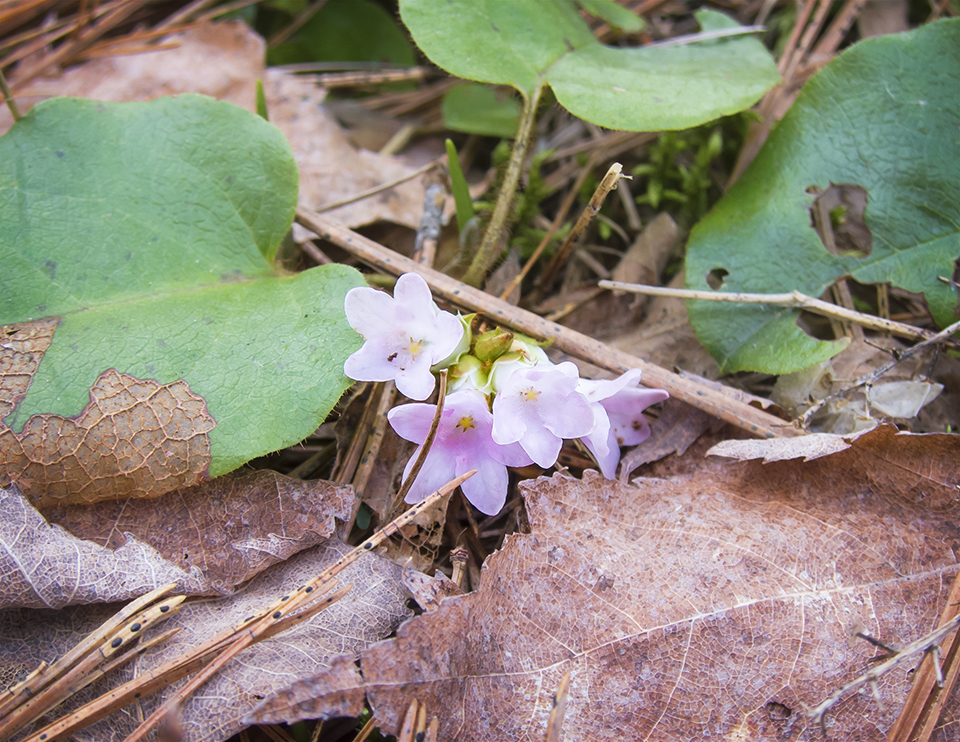
The flowers of Trailing Arbutus are white, pale pink, or deep pink. The fragrant flowers appear in clusters of short-stalked tubular flowers, emerging from the upper leaf axils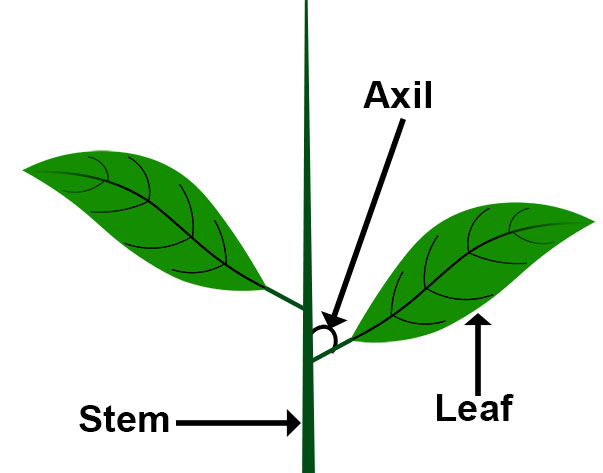 Axil: The angle between the upper side of a leaf or stem and the stem or branch that supports it. and the tips of branches. The individual flowers are small, ½ inch across, with 5 petals that are fused forming a tube about ½ inch long. The flowers expand from the short tube into five rounded, flaring lobes.
Axil: The angle between the upper side of a leaf or stem and the stem or branch that supports it. and the tips of branches. The individual flowers are small, ½ inch across, with 5 petals that are fused forming a tube about ½ inch long. The flowers expand from the short tube into five rounded, flaring lobes.
Trailing Arbutus is one of the earliest spring flowers in the Adirondack Mountains. A tally of flowering dates for the upland Adirondack areas compiled by Michael Kudish, based on data collected from the early seventies to the early nineties, gives the earliest flowering date as 19 April and the latest date as 22 May, with a median flowering date of 4 May. This is similar to more recent data on flowering times for the northeastern part of the Adirondacks. Plants in the southern Adirondacks may flower somewhat earlier, in mid-April.
The flowers are followed by fruit, which takes the form of fleshy, berrylike capsules which are pulpy and white inside. The round, five-celled capsule is about ¼ inch in diameter and is covered in glandular hairs.
Uses of Trailing Arbutus
Trailing Arbutus has limited uses. Although the flower tube is said to make an interesting nibble or addition to salads, the plant is protected in New York State and should never be picked.
Trailing Arbutus is rarely used medicinally, even in folk medicine. The plant was reportedly used by native Americans for several ailments. For instance, the Algonquin used an infusion of the leaves for kidney disorders. The Cherokee took a decoction of the plant for abdominal pains. The Iroquois treated rheumatism with a compound decoction of the plant.
Wildlife Value of Trailing Arbutus
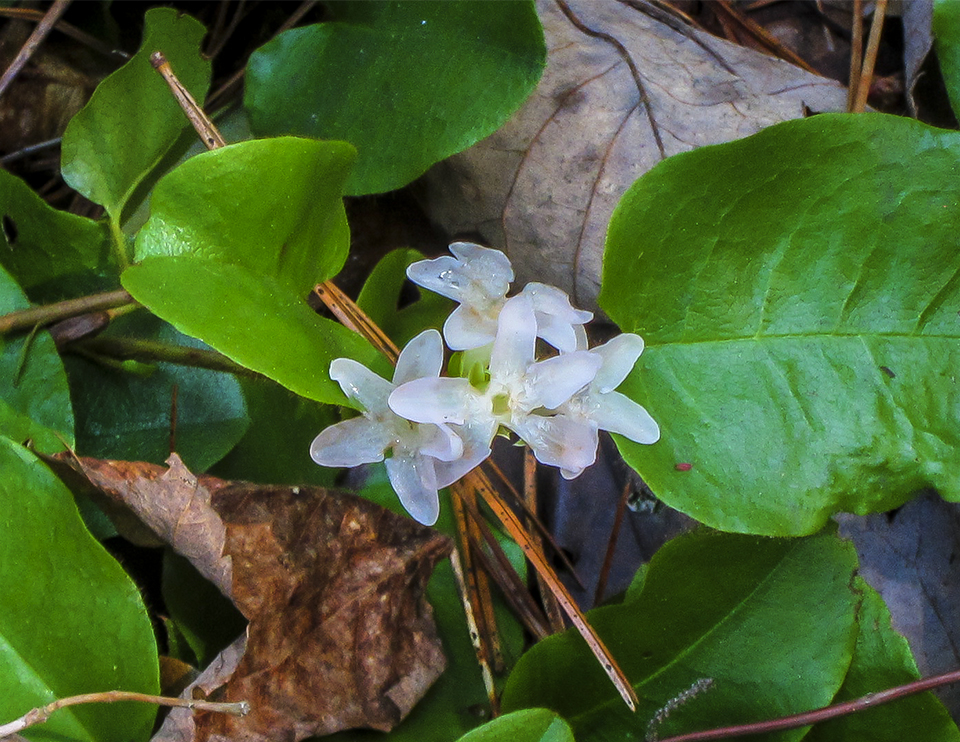
Trailing Arbutus has limited wildlife value. Arbutus plants are said to be consumed in winter by White-tailed Deer. Trailing Arbutus flowers are eaten by Spruce Grouse, although the plant is not of major component of the diet of this species.
Trailing Arbutus is of some importance for several insects. Its flowers attract bumblebees, which are apparently the plant's main pollinators. Ants are said to be attracted to the berrylike capsule. Trailing Arbutus is a larval host for the Hoary Elfin butterfly. Several insects feed on the foliage, including the larvae of the Brachys howdeni beetle, which may be responsible for the brown blotches observed on some Trailing Arbutus leaves.
Distribution of Trailing Arbutus
Trailing Arbutus grows in woodlands in the eastern half of the North American continent. It is found from Manitoba east to Newfoundland, south to Florida, west to Mississippi, and north to Illinois and Minnesota. Trailing Arbutus is listed as endangered in Florida.
Trailing Arbutus grows in most counties of New York State, where it is categorized as Exploitably Vulnerable. Its presence has been documented in all counties within the Adirondack Park Blue Line, except Fulton County and Lewis County.
Habitat of Trailing Arbutus
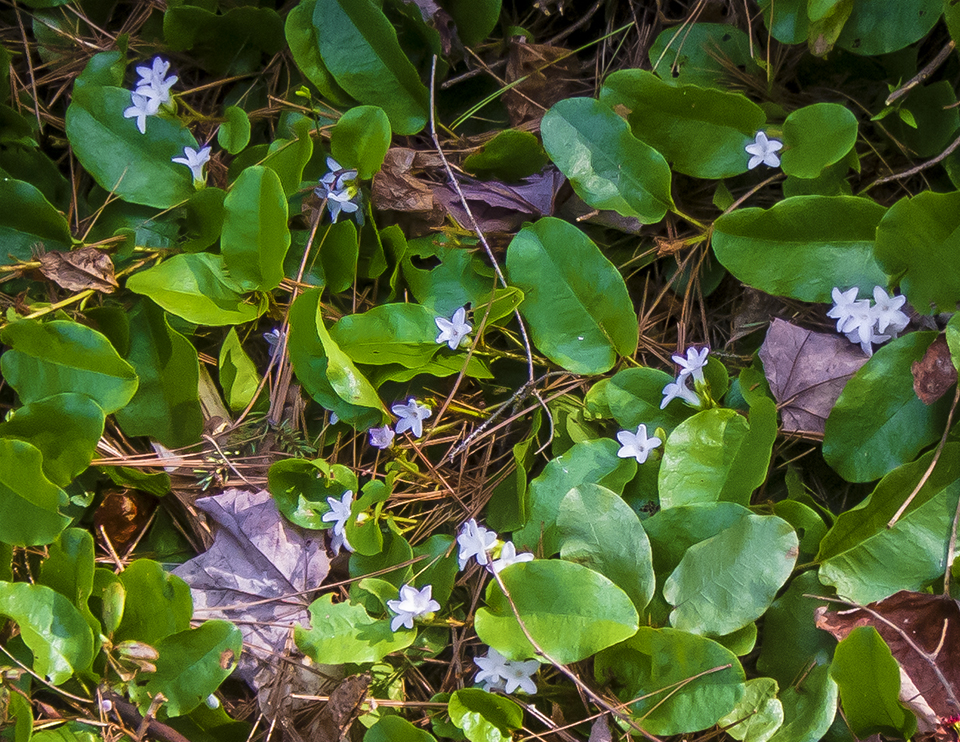
Trailing Arbutus appears to be somewhat flexible in terms of its site requirements. It can be found growing in relatively moist locations, but can also thrive in well-drained, acidic soils in sandy or rocky woods.
Look for this plant in dry to mesic acidic hardwood or mixed woods forests. It is often found growing under conifers, especially pines. In the Adirondack Mountains, Trailing Arbutus can be found in several ecological communities in the Adirondack Mountains, including Pine-Northern Hardwood Forest, Red Pine Rocky Summit,and Successional Blueberry Heath.
In the Pine-Northern Hardwood Forest community, for instance, you can find Trailing Arbutus growing under Eastern White Pine, with an admixture of northern hardwoods such as Paper Birch and Yellow Birch. Characteristic shrubs in this community include Northern Wild Raisin and blueberries. Characteristic wildflowers growing near Trailing Arbutus include Canada Mayflower, Bunchberry, and Wintergreen. Characteristic birds in this community include the Pine Warbler and Pileated Woodpecker.
Trailing Arbutus seems to do particularly well on the edges of dirt roads or trails in forests with acidic soils. This plant appears to be somewhat sensitive to environmental disturbances, such as lumbering.
References
Michael Kudish. Adirondack Upland Flora: An Ecological Perspective (The Chauncy Press, 1992), pp. 23-28, 142, 242, 245.
New York Flora Association. New York Flora Atlas. Trailing Arbutus. Epigaea repens L. Retrieved 13 March 2022.
Integrated Taxonomic Information System. Epigaea repens L. Retrieved 30 December 2017.
United States Department of Agriculture. The Plants Database. Trailing Arbutus. Epigaea repens L. Retrieved 13 March 2022.
United States Department of Agriculture. Forest Service. Pollinator of the Month. Hoary Elfin. Callophrys polios. Retrieved 13 March 2022.
Flora of North America. Epigaea repens Linnaeus. Retrieved 30 December 2017.
NatureServe Explorer. Online Encyclopedia of Life. Trailing Arbutus. Epigaea repens - L. Retrieved 13 March 2022.
Northern Forest Atlas. Images. Epigaea repens. Trailing Arbutus. Retrieved 13 March 2022.
Native Plant Trust. Go Botany. Trailing-arbutus. Epigaea repens L. Retrieved 13 March 2022.
New York State. Department of Environmental Conservation. New York Natural Heritage Program. Ecological Communities of New York State. Second Edition (March 2014), pp. 95-96, 109, 121-122. Retrieved 17 October 2015.
iNaturalist. Trailing Arbutus. Epigaea repens. Retrieved 2 May 2021.
iNaturalist. Adirondack Park Observations. Trailing Arbutus. Epigaea repens. Retrieved 13 March 2022.
New York Natural Heritage Program. 2022. Online Conservation Guide for Pine-Northern Hardwood Forest. Retrieved 13 March 2022.
New York Natural Heritage Program. 2022. Online Conservation Guide for Red Pine Rocky Summit. Retrieved 13 March 2022.
New York State. Adirondack Park Agency. Preliminary List of Species Native Within the Adirondack Park Listed Alphabetically by Scientific Name and Sorted by Habit. Volume 1. Updated 10.23.2006, p. 21. Retrieved 26 January 2017.
USA National Phenology Network. Nature’s Notebook. Epigaea repens. Trailing Arbutus. Retrieved 30 December 2017.
Connecticut Botanical Society. Trailing Arbutus. Epigaea repens L. Retrieved 13 March 2022.
University of Wisconsin. Flora of Wisconsin. Trailing-arbutus. Epigaea repens L. Retrieved 13 March 2022.
Minnesota Wildflowers. Trailing Arbutus. Epigaea repens. Retrieved 30 December 2017.
Lady Bird Johnson Wildflower Center. Trailing arbutus. Epigaea repens. Retrieved 30 December 2017.
New York State Department of Environmental Conservation. Winter Deer Foods. Retrieved 13 March 2022.
Anne McGrath. Wildflowers of the Adirondacks (EarthWords, 2000), p. 2, Plate 1. Retrieved 13 March 2022.
Roger Tory Peterson and Margaret McKenny. A Field Guide to Wildflowers. Northeastern and North-central North America (Houghton Mifflin Company, 1968), pp. 38-39, 236-237. Retrieved 13 March 2022.
Doug Ladd. North Woods Wildflowers (Falcon Publishing, 2001), p. 186.
Lawrence Newcomb. Newcomb's Wildflower Guide (Little Brown and Company, 1977), pp. 198-199.
David M. Brandenburg. Field Guide to Wildflowers of North America (Sterling Publishing Company, Inc., 2010), p. 217.
John Kricher. A Field Guide to Eastern Forests. North America (Houghton Mifflin, 1998), pp. 70-72. Retrieved 13 March 2022.
William Carey Grimm. The Illustrated Book of Wildflowers and Shrubs (Stackpole Books, 1993), pp. 200-201, 548-549. Retrieved 13 March 2022.
National Audubon Society. Field Guide to North American Wildflowers. Eastern Region (Alfred A. Knopf, 2001), pp. 507-508, Plate 513.
William K. Chapman et al. Wildflowers of New York in Color (Syracuse University Press, 1998), pp. 12-13.
John Eastman. The Book of Forest and Thicket: Trees, Shrubs, and Wildflowers of Eastern North America (Stackpole Books, 1992), pp. 191-192.
Plants for a Future. Epigaea repens - L. Retrieved 13 March 2022.
Steven Foster and James A. Duke. Medicinal Plants and Herbs of Eastern and Central North America (Houghton Mifflin Harcourt, 2014), p. 30.
Lee Allen Peterson. A Field Guide to Edible Wild Plants. Eastern and Central North America (Houghton Mifflin Company, 1977), pp. 102-103, 224-225.
University of Michigan. Native American Ethnobotany. A Database of Foods, Drugs, Dyes and Fibers of Native American Peoples, Derived from Plants. Trailing Arbutus. Epigaea repens L. Retrieved 30 December 2017.
The Cornell Lab of Ornithology. Birds of North America. Subscription web site. Spruce Grouse. Falcipennis canadensis. Retrieved 13 March 2022.
Butterflies and Moths of North America. Hoary Elfin. Callophrys polios. Retrieved 30 December 2017.
Canadian Biodiversity Information Facility. Butterflies of Canada. Index to Larval Foot Plants. Hoary Elfin. Callophrys polia. Retrieved 30 December 2017.
Iowa State University. BugGuide. Brachys howdeni. Retrieved 30 December 2017.
Iowa State University. BugGuide. Aroga epigaeella - Hodges#2189. Retrieved 30 December 2017.
Iowa State University. BugGuide. Hoary Elfin. Callophrys polios. Retrieved 30 December 2017.
Steven Clemants and Carol Gracie. Wildflowers in the Field and Forest: A Field Guide to the Northeastern United States (Oxford University Press, 2006), pp. 366-367.
Allen J. Coombes. Dictionary of Plant Names (Timber Press, 1994), p. 67. Retrieved 13 March 2022.
Charley Eiseman, "Introducing Brachys howdeni," BugTracks, 14 July 2016. Retrieved 31 December 2017.
